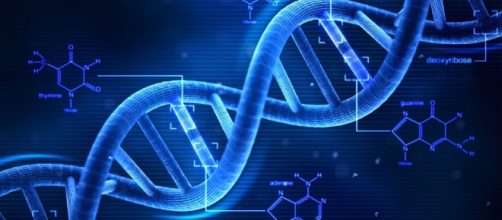A new research lead by Elizabeth O'Brien along with Walter Chazin's group at Vanderbilt University has discovered that the ‘’electrical wire’’ behavior of DNA plays an essential role in DNA replication and possibly involved in a different situation in the biological life of the Cell.
The research was published in the scientific journal ‘’science’’ titled ‘’the [4Fe4S] cluster of human DNA primase functions as a redox switch using DNA charge transport’’
The biological electrical wire
DNA is the main ‘’information’’ carrier agent in Biology, but it turns out that it serves more roles than just a ‘’memory device’’.
In the 90s scientists discovered that DNA has an electrical ‘’wire like’’ property similar to the wires that we use in our daily life, transferring electron up and down along the wire, later it was discovered that this electrical behavior helps detect any mutations that occur and repair them.
The new research has discovered a new function for this electrical behavior in which it helps in DNA replication. Cells replicate themselves all the time inside our bodies, that is how we heal and grow; in order for cells to replicate, DNA molecules must make identical copies for themselves in what’s called DNA replication. The researchers have discovered that the main proteins involved in DNA replication rely on sending and receiving electrons along the DNA ‘’wire’’, as one of the researchers puts it "Nature is the best chemist and knows exactly how to take advantage of DNA electron-transport chemistry."
DNA replication
DNA replication depends crucially on proteins; first, a protein ‘’cuts’’ the double helix into two parts, then a protein called D-NA primase binds to the D-NA molecule and makes a template for another protein called D-NA polymerase that comes afterward and starts copying information from the original D-NA that is being copied.
What the researchers discovered is that D-NA primase and D-NA polymerase have an iron-sulfur cluster that is the source of electron exchange between the two proteins. The researchers found that DNA primase cannot bind to the D-NA molecule unless it is oxidized, or lost one electron, so with clever tests the researchers found that DNA primase sends one electron to D-NA polymerase to initiate replication, and afterwards DNA polymerase sends the electron back to D-NA primase to ‘’let go’’ of the molecule.
"The electronic state of the iron-sulfur cluster in D-NA primase acts like an on/off switch to initiate DNA replication," says O'Brien.
In addition, the iron-sulfur clusters are common throughout the cell and they probably are involved in several processes similar to the ‘’electrical wire signaling’’ discovered in this research.

